A simple Oxalic Acid trickling method for the small-scale beekeeper
This blog describes a simplified method of applying oxalic acid, using the trickling method, which can be used as part of an integrated approach to the management of varroa.
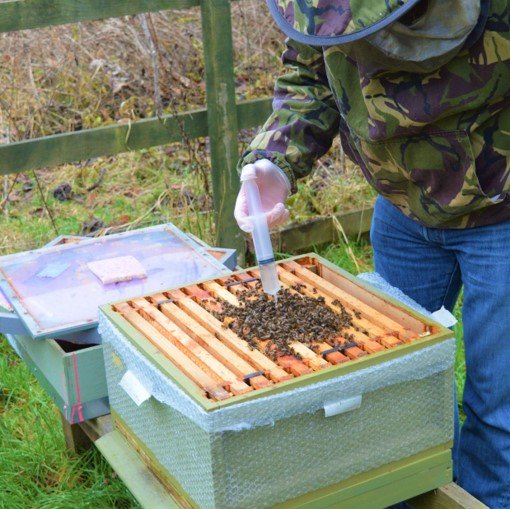
Why do I prefer trickling to vapourisation?
Pure oxalic acid is horrible stuff. If you inhale it, ingest it, or even absorb it through the skin, serious internal injuries can result. Including the creation of salts which can crystalise in your kidneys or brain!
Vapourisation uses the vapour of pure oxalic acid. The solution used for trickling is approximately 4% oxalic acid in a sugar syrup solution. This solution is much less toxic to the beekeeper.
Research has shown that vapourisation is more effective than trickling, at killing varroa. (click here to see the Sussex university web page on varroa control). Vapourisation achieved 97% versus Trickling at 93%. In addition, the bees appear to do better with vapourisation. Colonies were reported to have 20% more bees four months after treatment.
Despite this knowledge there are three key reasons why I prefer the trickling method: –
- It significantly reduces my risk of exposure to pure oxalic acid crystals, dust or vapour.
- It is simple and quick to do by one person looking after 20 hives.
- The equipment is very portable, readily available and inexpensive.
Making up the oxalic acid trickling solution is a 2-step process
Api-Bioxal is an approved oxalic acid based treatments for varroa. It comes in a 35g sachet. The instructions for making up the syrup are on the back of the packet. Here is my method for following them.
Step 1 – make up the sugar syrup solution
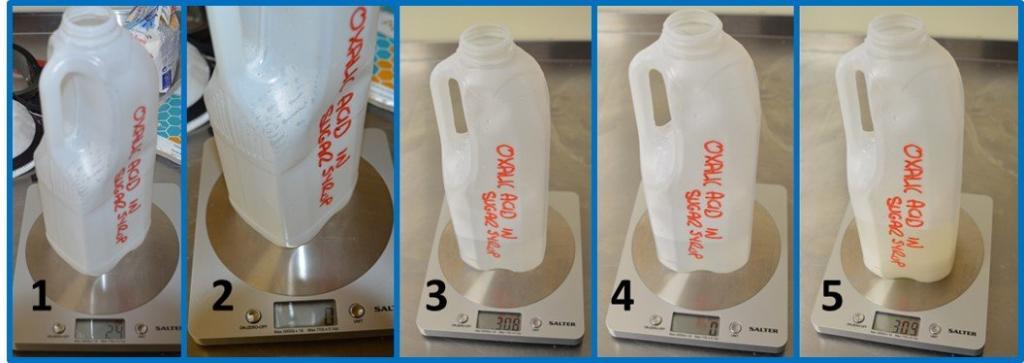
Making up the syrup solution
- Put an empty, clean milk carton on a set of digital scales
- Zero the scales
- Add 308g of water into the carton (instructions say 308ml but it’s the same thing for pure water at 20 degree C, at sea level!)
- Zero the scales
- Add 308g of sugar to the water in the carton
You will now have 500 ml of 50:50 sugar syrup solution. Actually, it’s more of a mixture than a solution at the moment, so put the cap on and shake it until the sugar dissolves in the water and allow it to stand. The syrup is stable without the oxalic acid crystals, so you can make up the syrup either on the same day you plan to use it, or well in advance.
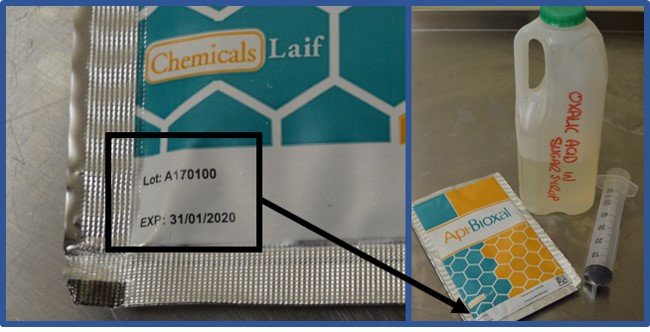
Make sure you take a note of the lot code and expiry date of the Api-Bioxal for your records. You can find out more about the legal requirement to keep records of treatments on the national bee unit website by clicking here.
You are now ready to go off to the apiary, with your unopened 35g sachet of Api-Bioxal, your milk carton with 500ml of 50:50 Sugar solution and a clean 60ml syringe. Don’t forget your gloves and mask.
Step 2 – adding the Api-Bioxal to the syrup
The Api-bioxal is best added to the sugar syrup immediately before it is used, at the apiary. The instructions on the packet show that the shelf life of the solution, once the crystals are added to the syrup, is only 24 hours. This can be done by snipping off the corner of the sachet and pouring it directly into the sugar syrup solution in the carton.
This is the only time that you have the possibility of coming into contact with the pure oxalic acid crystals, so use gloves and a mask and be careful. Make sure to cut just enough off the corner to allow the powder to pour into the carton without any of it escaping down the side or being blown away in the breeze. Safely dispose of the empty sachet, with the little piece you cut off.
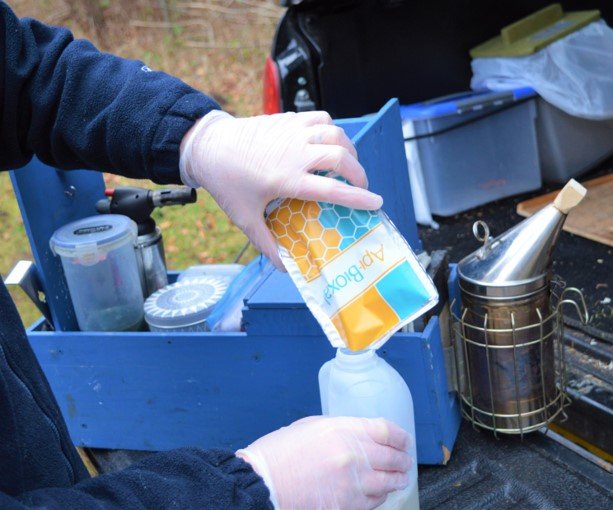
With the cap screwed back onto the carton give it a shake to dissolve the oxalic acid in the syrup.
Planning for Oxalic Acid Trickling
When my hives were fed in the autumn and set up for winter, (click here to see my blog on winter hive preparation), the aim was to have enough stores in the brood bodies to see the colonies all the way through the winter. Fondant is only added late in winter if the stores in the brood bodies are running low. Trickling becomes much more difficult if a block of fondant was stuck directly on top of the frames at the start of the winter!
Oxalic Acid Trickling Method
Lay the carton on its side, with the neck elevated, so that the solution does not flow out. The 60ml syringe is just the right size to go through the neck of the carton. You are now ready to do some trickling!

The instructions for using Api-Biaxol are clear. 5ml of solution should be applied per seam of bees and that a maximum of 50ml of solution should be used for each colony.
With a little practice it becomes easy to judge the rate to apply the solution with the syringe. It is more of a controlled dribble than a squirt!
I don’t feel obliged to use all the 5ml per seam or 50ml per colony. If there are only 6 seams of bees, I’ll only trickle these seams and if two of them are only half the width of the frames I’ll only use half the amount in those seams.
My breeding strategy has given me near native bees, which form small clusters and are efficient with stores over winter, so I don’t want to punish them by drenching them with solution.

Summary
This blog describes a simplified method of applying oxalic acid, using the trickling method, which can be used as part of an integrated approach to the management of varroa.
Despite the research showing that trickling is 4% less effective, there are three key reasons I prefer it: –
- It significantly reduces my risk of exposure to pure oxalic acid crystals, dust or vapour.
- It is simple and quick to do by one person looking after 20 hives.
- The equipment is very portable, readily available and inexpensive.
Pure Oxalic Acid is a very toxic substance and needs to be handled with care.
Api-Biaxol is an approved treatment for varroa and it is a legal requirement to keep records of its use. Api-Biaxol is easy to get online.
If you have found this interesting please subscribe to my blog and/or share on Facebook.

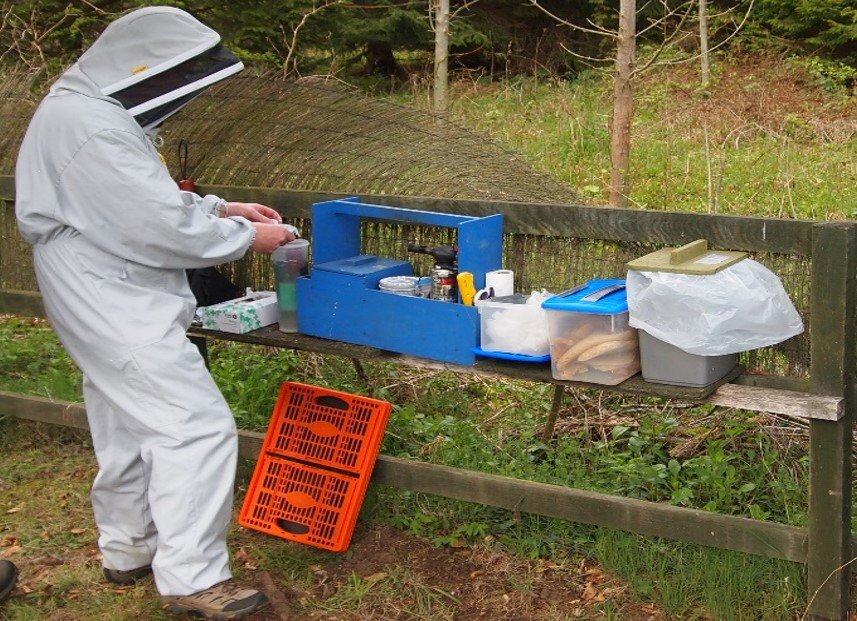
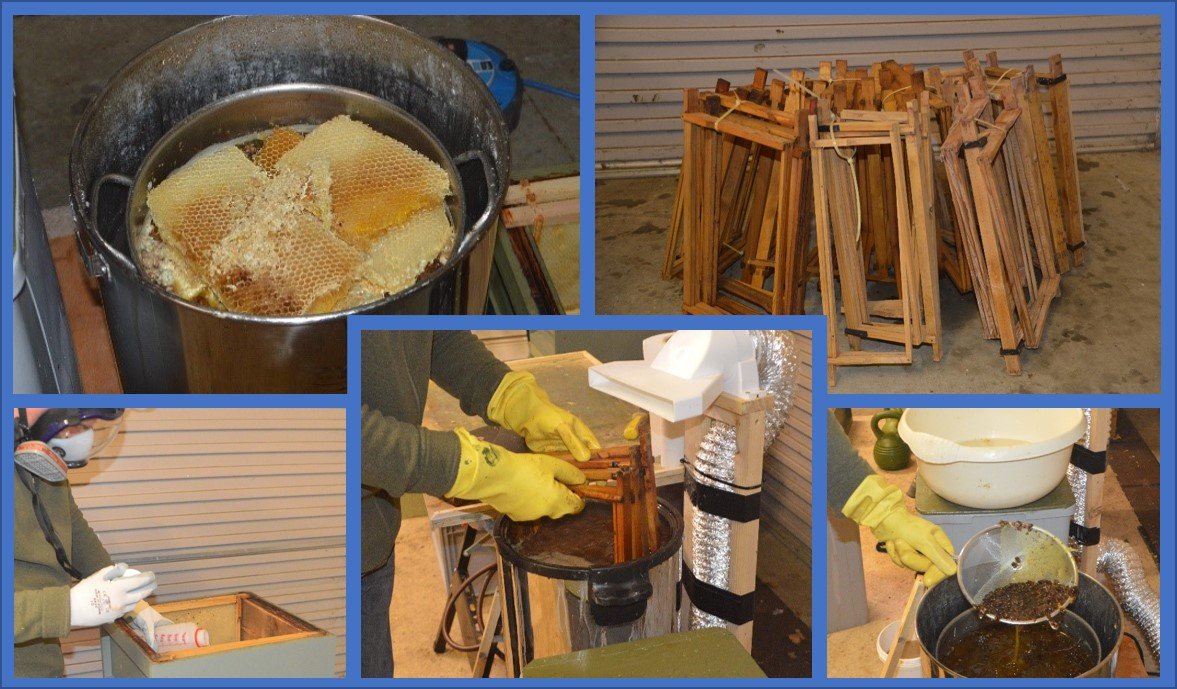
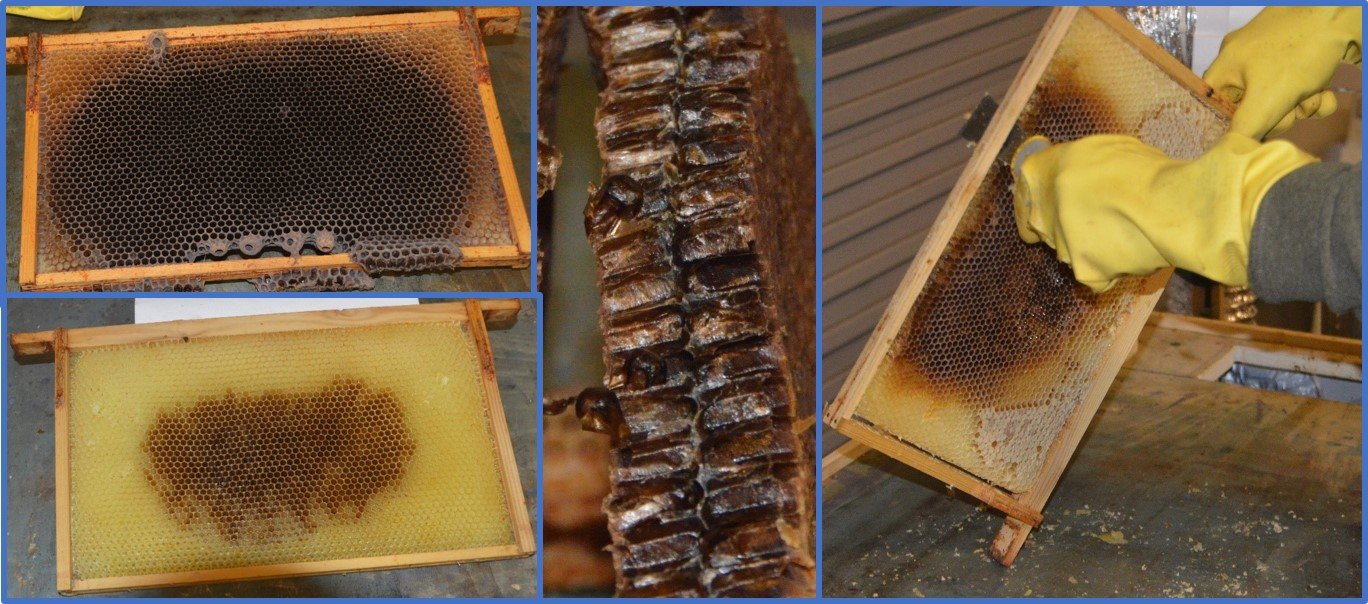
A good method Ian, I will do mine in the next fortnight as you have done it
Really nicely written mate – Can you mention when to do the trickling please ? I know that you have mentioned the winter but are there any conditions that you’d like to see before treating your bees. For example, in the midlands we haven’t had any cold weather yet.
Thanks. Yes, good point. Basically its more effective when the colony is brood-less. Here in rural Northumberland we have had some frosts and many colonies are tightly clustered, but it is quite mild so far this winter. I’m aware that this method can be used in summer too but involves creating a brood-less state in the hive, which involves taking the queen away for a brood cycle. (this is actually less disruptive than you would think becasue the bees use up less resources raising brood)